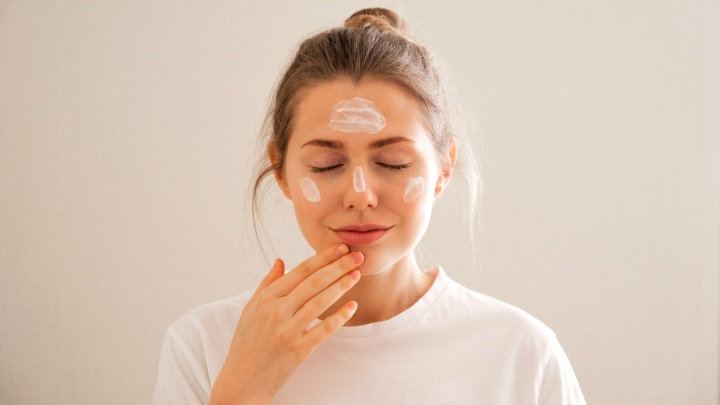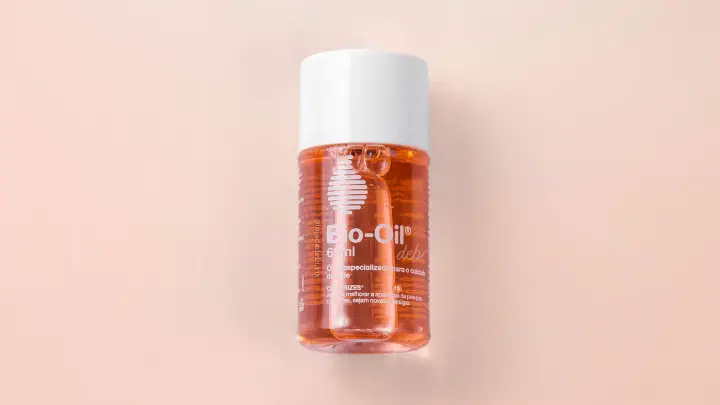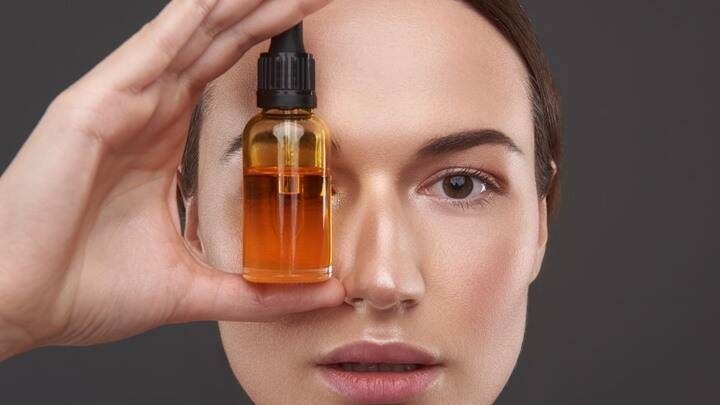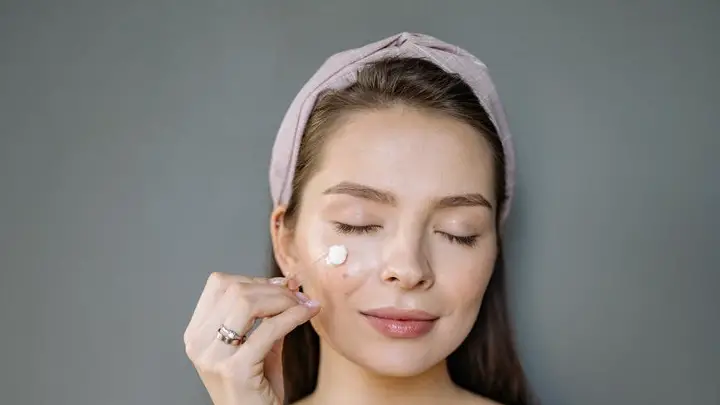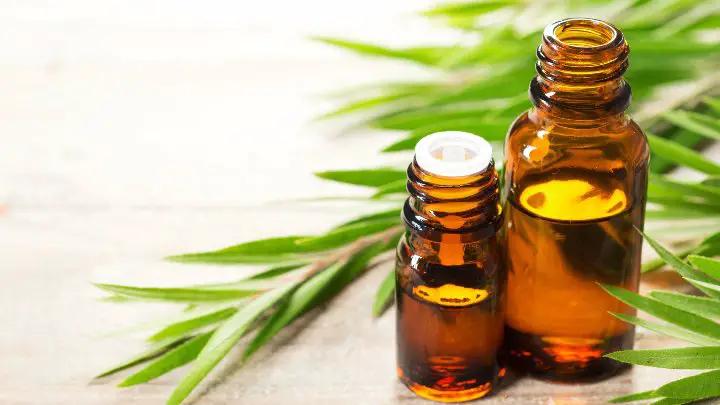Are you thinking “what is tretinoin and what is niacinamide?” Look no further because I’m here to tell you everything about these ingredients.
Tretinoin and niacinamide are two popular acne medications you might have heard about from your friends or dermatologist. It’s not uncommon for people to confuse the two and wonder if they are interchangeable.
In this article, I’ll cover what both ingredients are, how they work to improve skin condition, side effects, and how to use them together. Keep reading to find out.
Okay, But What Is Tretinoin?
Tretinoin is a form of vitamin A used to treat acne and other skin conditions such as psoriasis, fine lines, wrinkles, sun damage, and discoloration. This form of vitamin A belongs to the family of medications called retinoids.
It works by increasing cell turnover and exfoliation, thereby making layers shed more quickly. This, in turn, unclogs pores and helps keep them from becoming blocked.
Some people use tretinoin under their regular moisturizer for milder cases of acne or to keep their skin looking young. Others use it at higher doses once or twice a week as part of a treatment plan for severe acne.
Tretinoin comes in several forms, including cream, gel, liquid, and topical solution and it’s available by prescription only. The only downside is that tretinoin can cause side effects on your skin, such as redness, flaking, and dryness.
Additionally, it can make your skin more sensitive to sunlight, so you should avoid spending time outside without sunscreen. Also, you shouldn’t use tretinoin if you’re pregnant or breastfeeding, because it could harm your baby.
What Is Niacinamide and What Does It Do?
Niacinamide is a type of vitamin B3—sometimes referred to as nicotinamide or nicotinic acid. This vitamin is available in both over-the-counter and prescription forms. You can also find it in several different foods, such as fish, meat, and whole grains.
Niacinamide works behind the scenes in skincare products to provide several benefits. It helps to smooth skin texture and fade discoloration while also helping to decrease oil production in your skin.
Some side effects may occur when using niacinamide, such as flushing dryness, and itching, but the benefits of this vitamin far outweigh the risks.
Since everyone’s body is different, you may experience some of these side effects even if other people don’t, so it is important to read the label and check with your doctor before using it.
Is It Okay to Use Tretinoin With Niacinamide?
Yes, it is. Tretinoin and niacinamide are both vitamin derivatives. The difference between them is that tretinoin is a prescription-strength form of vitamin A, while niacinamide is a form of vitamin B3 available over the counter.
Tretinoin and niacinamide both help to treat acne, reduce wrinkles and improve overall skin tone and texture. However, because they are of different strengths, you should avoid using them together at the same time.
Here’s why: If you use them together at the same time, it may cause your skin to become irritated or inflamed. But if you use one in the morning and the other at night, you will be able to get the full range of their benefits.
Can You Mix Tretinoin With Niacinamide?
Mixing tretinoin with niacinamide is not a good idea. While it is true that tretinoin and niacinamide both work wonders on the skin, you need to avoid mixing them because they can have adverse effects on your skin.
When you apply both treatments at once, you risk developing peeling and flaking skin as well as redness around your face and neck area. You may also experience increased irritation in these areas as well.
Mixing tretinoin with niacinamide can be especially problematic if you have sensitive skin, so you should only use one of these treatments at a time, not two.
Precautions for Using Tretinoin With Niacinamide
If you choose to use both tretinoin and niacinamide together, make sure that you follow these precautions:
- Start by adding a small amount of tretinoin to your routine first. Do this for a couple of weeks to see how you react before adding the niacinamide into your routine.
- Use them at different times of the day instead of using them both together in the morning or at night.
- Use sunscreen. Your skin becomes more susceptible to sunburn when using these products, so wear sunscreen every time you go outside.
- Be careful when using other ingredients with either product. If you’re using a very strong AHA or BHA product, try using it on alternate days with one of these products (or reduce usage to once per week).
Side Effects of Using Tretinoin With Niacinamide
Both tretinoin and niacinamide have positive effects on the skin, but they can also cause some side effects when used together.
The most common side effects of using tretinoin with niacinamide include redness and itching. These are typically mild and tend to go away within one to two weeks as your skin gets used to the medication.
It’s also important to avoid using tretinoin and niacinamide if you’re pregnant or breastfeeding. They haven’t been proven safe for pregnant women or nursing mothers.
Other possible side effects of using tretinoin with niacinamide include:
- Burning and stinging at application sites
- Skin peeling or flaking
- Dryness and chapping
- Sensitivity to sunlight or ultraviolet light
If these side effects persist or worsen, stop using these medications immediately and discuss them with your doctor.
Is Tretinoin the Same Thing as Retinol?
Retinol and tretinoin are both types of vitamin A, although they work a little differently. While retinol is available over the counter in products like moisturizers, tretinoin is a prescription-only treatment for acne, wrinkles, and other skin problems.
There are a couple of ways that retinol and tretinoin are different. First off, the way they get to work on your skin can be different. Retinol works on the outer layer of the skin, but with tretinoin, the medication penetrates deeper into the inner layer of the skin.
Another difference between these two medications is how they are used to treat different conditions. Dermatologists often prescribe tretinoin as a topical cream or gel to treat fine lines, wrinkles, sun damage, and acne.
Both products can cause redness, dryness, itching, and peeling of the skin in some people. Therefore it is best to start using either retinol or tretinoin with low concentrations and then gradually increase the dose over time to avoid any side effects.
What Can You Not Mix With Tretinoin?
Like with every medication, there are certain things you should not use together with Tretinoin. These include:
- Retinol and other topical acne products, such as benzoyl peroxide. This combination can irritate your skin and could lead to a severe allergic reaction.
- Other retinoid medications, like Retinol or Renova. This combination could increase the risk of side effects on your skin.
- Products with high concentrations of alcohol and astringents. These types of products can dry out your skin and make your acne worse.
You’ll also want to avoid using tretinoin with other substances that may irritate or dry your skin including:
- Oily cosmetics
- Medicated cosmetics
- Soaps and cleansers containing alcohol, fragrance, or dye
- Harsh abrasives, astringents, or soaps
- Medicated products containing sulfur, resorcinol, or salicylic acid
Things to Keep In Mind
- You can use tretinoin and niacinamide for all skin types, but they’re most effective on oily and acne-prone skin.
- Because you’ll be putting tretinoin and niacinamide directly on your skin, avoid getting them on your lips, eyes, and mucous membranes.
- You should also avoid applying them to wounds or irritated skin. If you have sensitive skin or eczema, discuss tretinoin and niacinamide with your dermatologist before using these products.
- You should only use tretinoin and niacinamide as directed by your doctor because too much of these medications can irritate the skin.
- Don’t use any other retinoid or vitamin A product while using tretinoin.
FAQs
Does niacinamide cause purging?
No, it doesn’t. Your skin should not get worse from using niacinamide-containing products unless you have an allergy or sensitivity to this ingredient.
However, you may experience allergic reactions to niacinamide, especially if you have sensitive skin. If you notice redness, dryness, or peeling while using niacinamide, discontinue use and consult with your dermatologist if these conditions persist.
Can you use tretinoin with hyaluronic acid?
Yes, you can. Both ingredients are very effective when combined in a skincare routine. However, if you have never combined them before or if you have sensitive skin, it’s best to ask your doctor before combining them both into your routine.
It’s also important to note that tretinoin can make the skin more sensitive to sunlight. So it is best not to pair this medication with any medication that may increase sensitivity to sunlight.
Should you use tretinoin and retinol together?
No, you shouldn’t. Tretinoin should not be used with other topical retinoids, such as retinol, because they could react with each other and cause serious side effects.
The exception is if your doctor specifically tells you to use these medications together. Retinoids also make the skin more sensitive to sunlight than normal, so you should only apply one at a time.
Conclusion
Tretinoin and niacinamide are some of the most effective skincare ingredients available and might be a great addition to your anti-aging skincare routine. Both vitamins can help treat acne and reduce the appearance of wrinkles and other signs of aging.
As for using tretinoin and niacinamide together, you might experience side effects like itching, redness, or swelling of the skin. Practitioners also recommend extreme caution if you are pregnant or are breastfeeding as the medications may pass on to the fetus.
This might cause birth defects to the baby and therefore precautionary measures should be taken before using these ingredients together.
Thanks for reading.
For more information on the best combinations of ingredients, visit Serum101 today.
